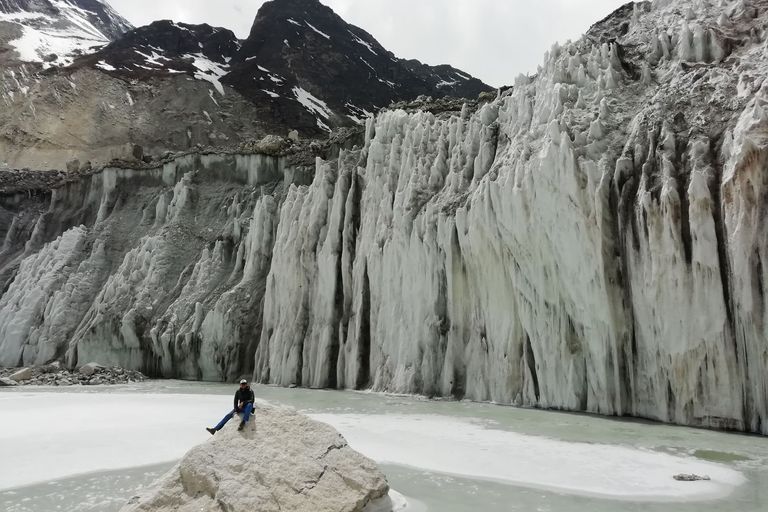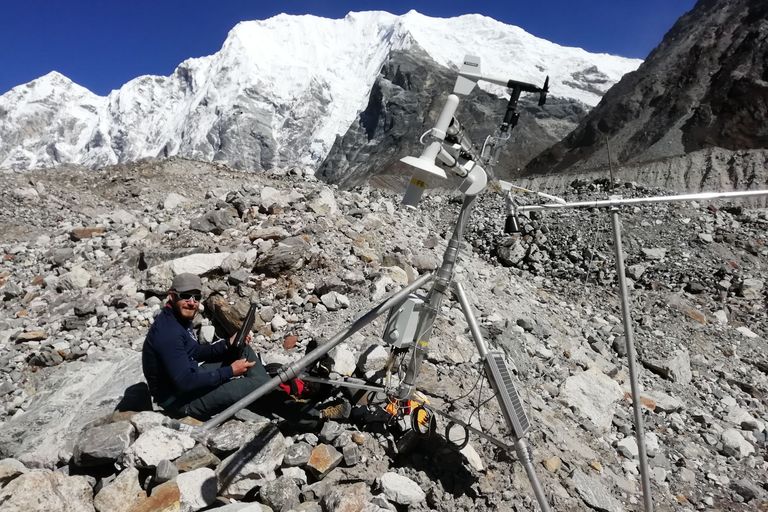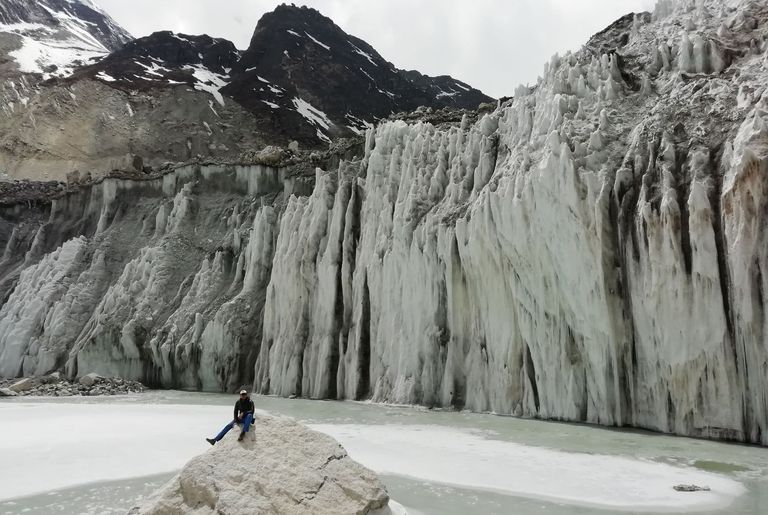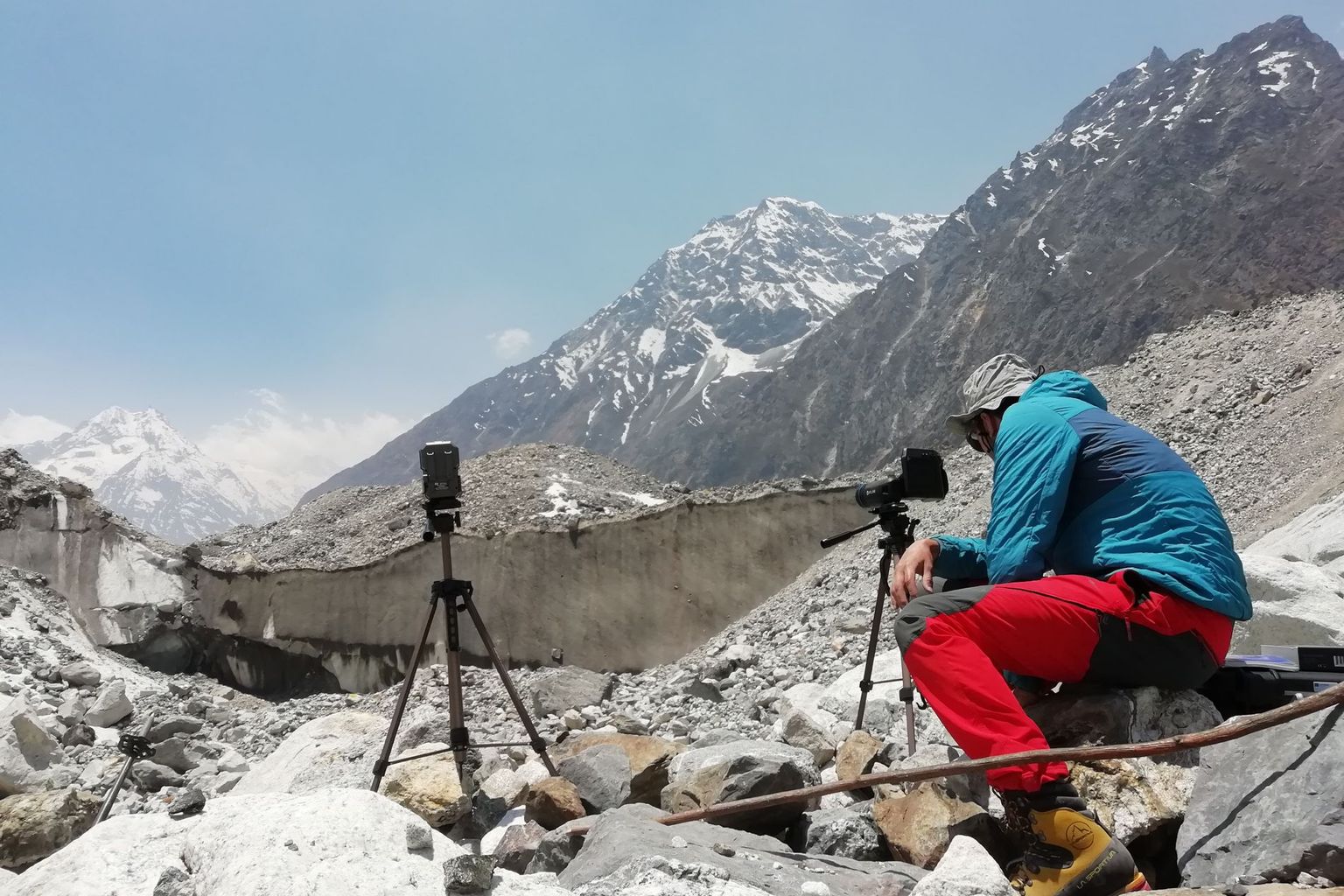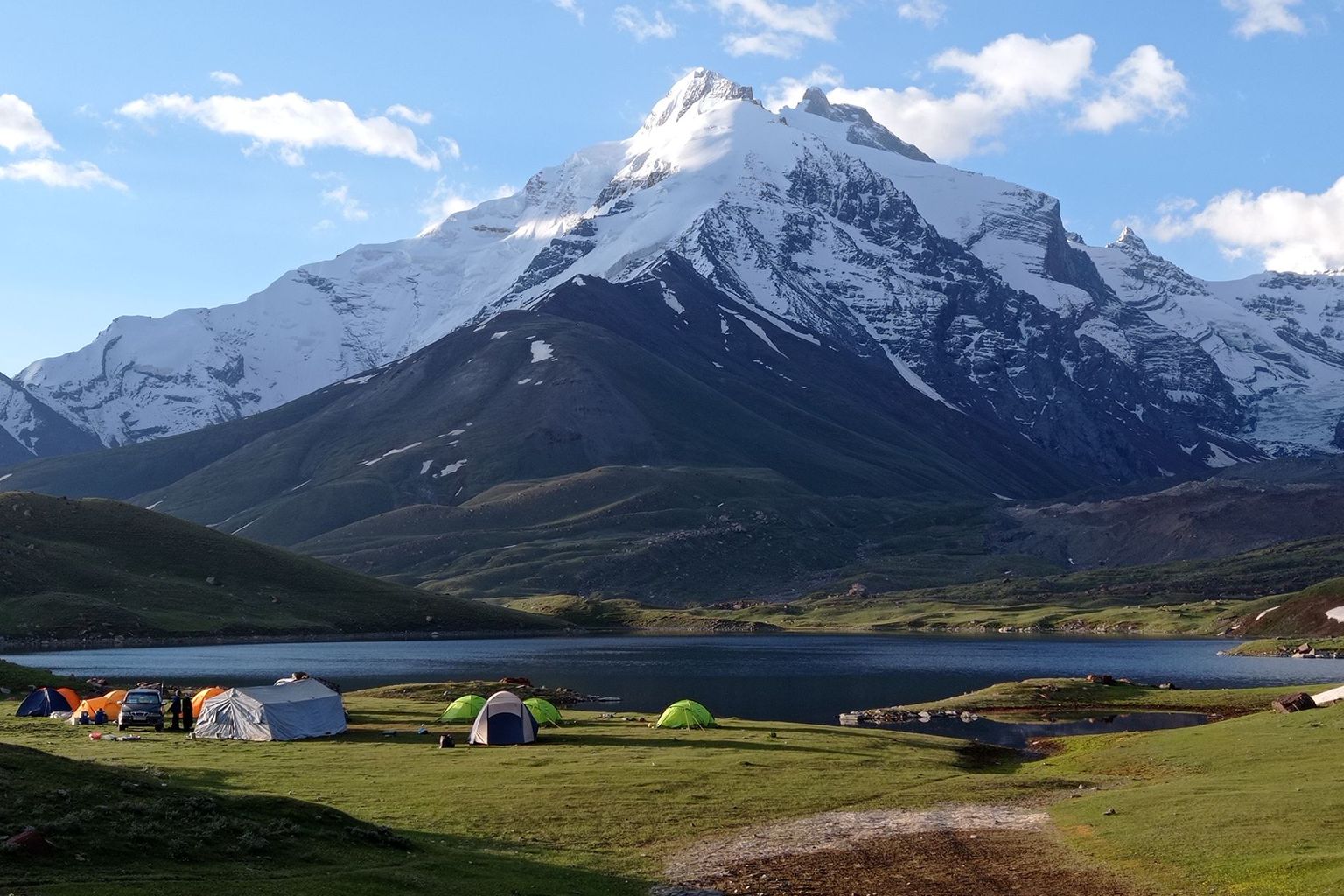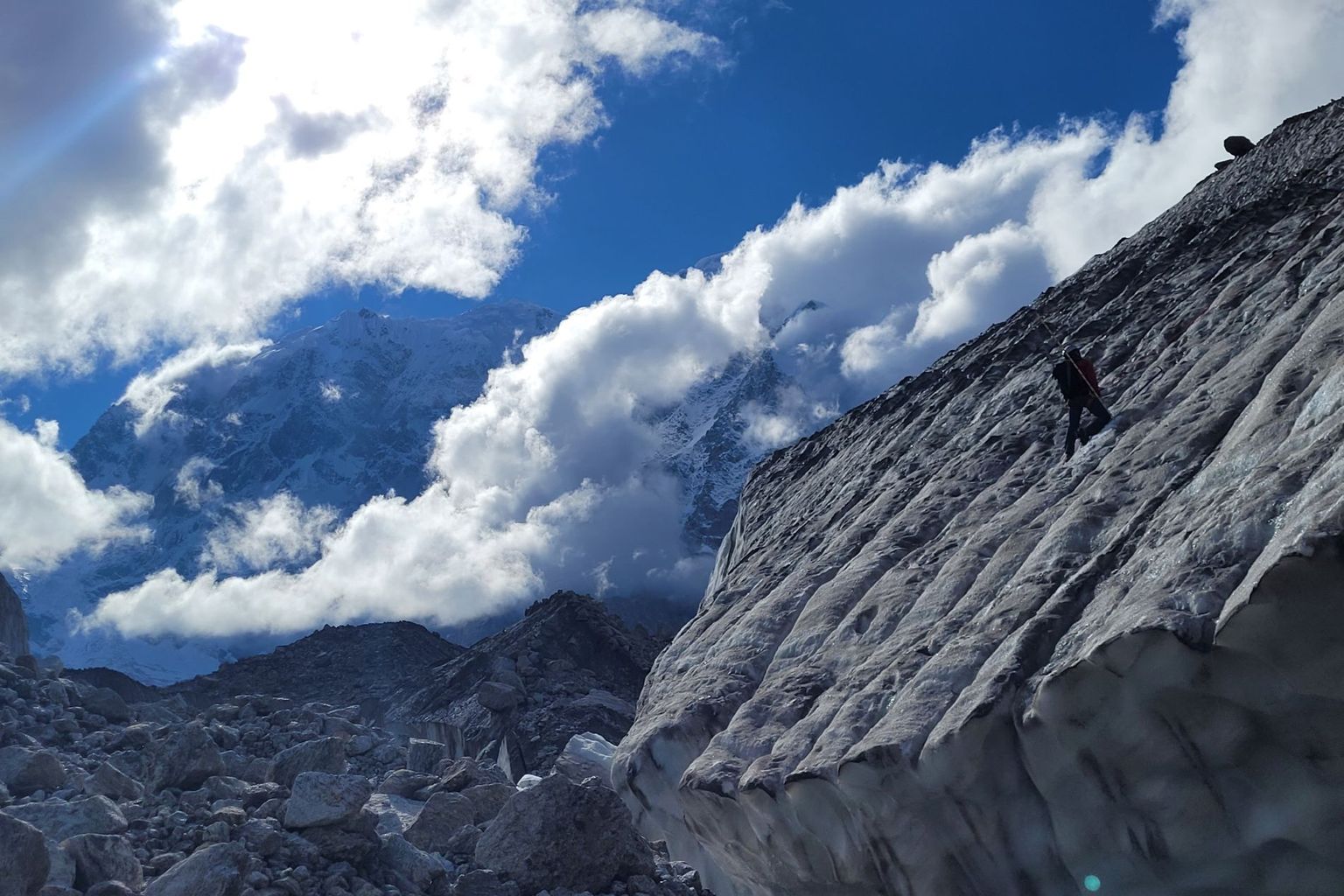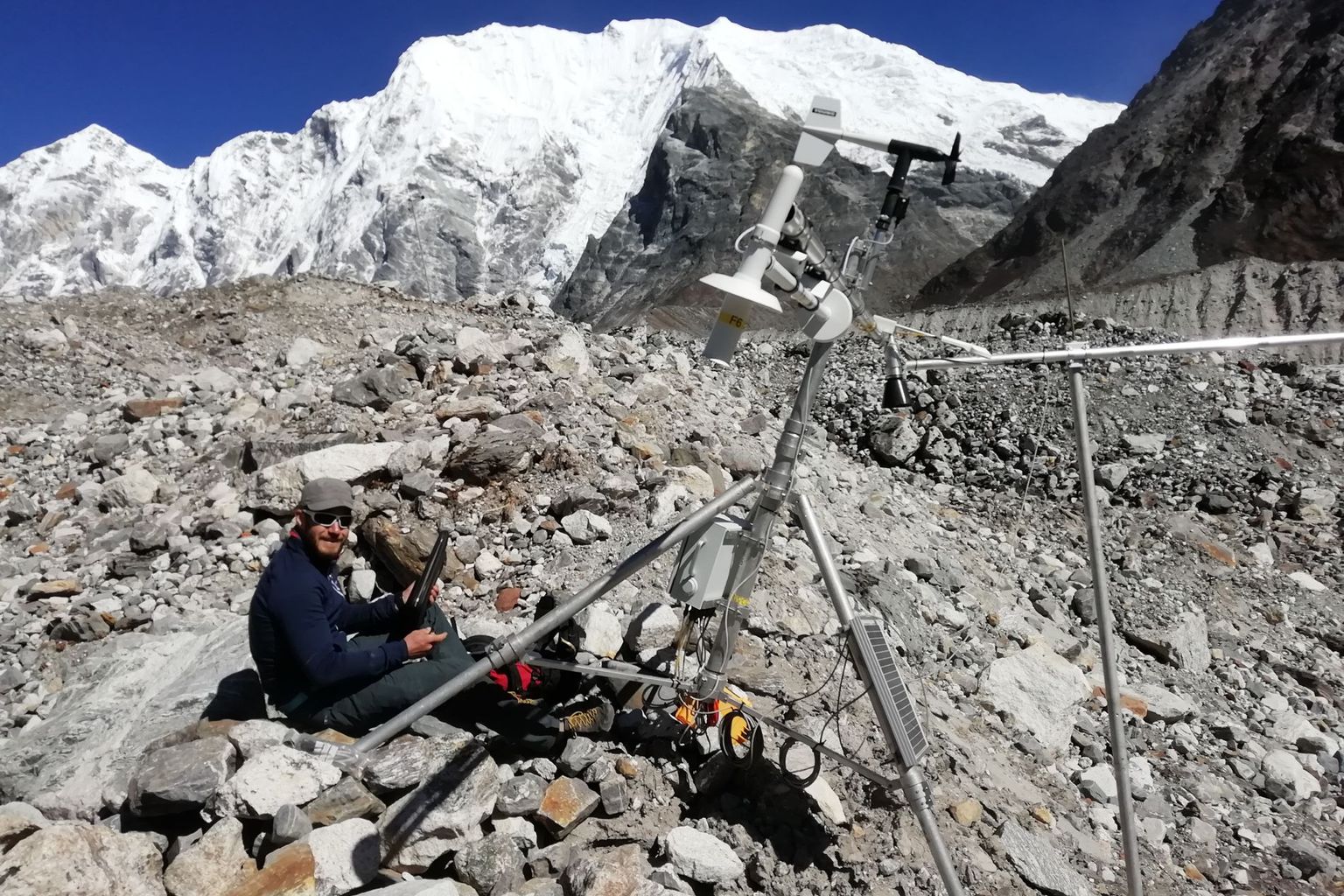Many glaciers in the Himalayas are completely covered with debris, but their surface is regularly dotted by large ice cliffs that rise up in the air. The doctoral dissertation by Marin Kneib confirms the hypothesis that ice cliffs accelerate the mass loss of glaciers and, consequently, compensate for the insulation effect created by the debris. His work sets new standards for the understanding of ice cliffs and their development, thanks to the huge number he was able to track with an unprecedented spatial and temporal resolution. The young researcher developed new satellite remote sensing technologies for this purpose, an innovative model for the life cycle of ice cliffs, and camera systems for monitoring ice cliffs at high altitudes, in conjunction with a 3D energy and mass balance model.
Francesca Pelliciotti describes Marin Kneib’s work as «extremely innovative». The professor at the Institute of Science and Technology Austria mentored his doctoral dissertation at the Swiss Federal Research Institute WSL, adding that: «The characteristics, patterns and behaviour of cliffs (including their potential for melting) have never been investigated with such a large sample and, at the same time, such a high temporal resolution.» «This work is in keeping with the pioneering spirit of Alfred de Quervain», the Swiss Arctic explorer (1879-1927), complements Urs Baltensperger, a member of the Prix de Quervain jury and President of the Swiss Commission of the High Altitude Research Station Jungfraujoch. The award ceremony is to be held as part of a public symposium on 30 November 2023 at the Swiss Alpine Museum in Bern.
Since completing his doctoral dissertation, Marin Kneib has been a post-doctoral scientist at the Institute of Environmental Geosciences in Grenoble and the University of Innsbruck.
Prix de Quervain
The prize, which is worth CHF 5,000, is awarded for outstanding masters, doctoral dissertation or post-doctoral work, alternating each year for polar or high altitude research. The Swiss Committee on Polar and High Altitude Research (SKPH) of the Swiss Academies of Arts and Sciences, the Swiss Commission of the High Altitude Research Station Jungfraujoch (SKHFJ) of the Swiss Academy of Sciences (SCNAT) and the Swiss Foundation for Alpine Research (SSAF) promote young scientists in this way.
